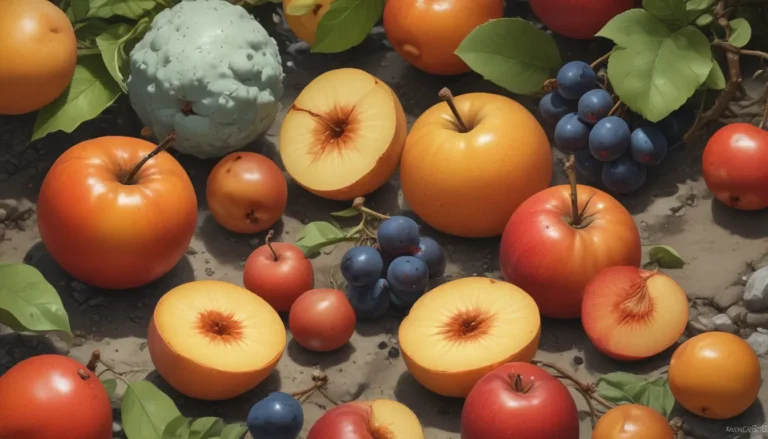How to Force Branches to Bloom Indoors During the Winter: Your Ultimate Guide

Welcome to the ultimate guide on how to force branches to bloom indoors during the winter months. So, why should we wait for spring to arrive naturally when we can bring the beauty of blooming branches into our homes early?
When the winter season has us feeling a little down and craving some color and greenery, there’s no need to wait for nature to take its course. By forcing branches to bloom indoors, we can create our little spring oasis right in the comfort of our homes.
The Best Species to Force
Not all flowering trees and shrubs can be forced to blossom indoors, but certain species lend themselves well to the process. When choosing species to force, it’s essential to consider the bloom time, ease of forcing, and the aesthetic appeal of the flowers.
Here are some recommended species that are perfect for forcing indoors:
- Almond
- Apple
- Beech
- Birch
- Buckeye
- Cherry
- Crabapple
- Deutzia
- Dogwood
- Fothergilla
These species offer a range of colors, shapes, and sizes, making them ideal for creating a beautiful spring display inside your home.
When to Force Branches and Identifying Buds
Forcing branches requires careful timing and attention to detail. Most species need to experience a period of dormancy or cold temperatures to form buds that can be forced to bloom indoors. It’s essential to wait until the buds are starting to swell before taking cuttings for forcing.
Buds can be identified by their shape and texture, with leaf buds being more pointy and elongated, while flower buds are more round. Color is not a reliable indicator, as some young leaves emerge in different shades.
Before cutting branches for forcing, ensure the buds are at the right stage of development by cutting open a bud to check for distinguishable parts inside. Once the buds are swollen and ready, you can proceed with cutting the branches.
How to Cut Branches
When selecting branches for forcing, choose ones that are about as thick around as a chopstick, long, and straight. Avoid branches that are broken or diseased-looking, and make sure each section has visible swollen buds.
To cut the branches, use sharp, clean clippers or secateurs and cut just above a bud or joint. Cuttings should be at least 12 inches in length to ensure successful forcing. Immediately place the cuttings in warm water to prevent the ends from sealing.
It’s essential to change the water every few days and add a teaspoon of bleach per gallon of water to prevent fungal or bacterial growth. Mist the branches daily to keep them hydrated and fresh.
How to Force Branches
Once you have cut the branches and placed them in warm water, it’s time to start the forcing process. Place the branches in a tall container filled with lukewarm water, ensuring that the branches are submerged by a quarter to a third. Avoid direct sunlight and maintain temperatures between 60 to 70°F for successful forcing.
If the buds do not show signs of growth after two weeks, consider cutting fresh branches and starting the process again. By maintaining the right conditions and care, you can ensure successful branch forcing.
Troubleshooting Problems
If your buds don’t open as expected, several factors could be causing the issue. Common problems include cutting branches too early, bacterial or fungal growth, excessive sun exposure, or sealed cut ends preventing water uptake.
To troubleshoot these issues, ensure that you cut branches at the right stage of bud development and change the water frequently. Adding bleach per gallon of water can help prevent bacterial or fungal growth. Keep the branches away from direct sunlight and maintain proper hydration to promote healthy blooming.
Maintaining Your Blossoms
Once the blossoms have opened, maintaining them requires proper care and attention. Keep the branches in cooler temperatures between 50 and 70°F to extend the bloom times. It’s recommended to change the water every few days and add a splash of vodka or floral preservative to help preserve the blossoms.
Avoid direct sunlight and keep the branches in a cool area to prolong their freshness. Misting the blossoms daily and maintaining proper hydration will help them stay fresh longer.
It’s Time to Bring Spring Early
Forcing branches to bloom indoors during the winter is a rewarding and enjoyable activity that can bring the beauty of spring into your home ahead of schedule. By choosing the right species, timing the process correctly, and providing proper care, you can create a stunning spring display that brightens up your living space.
What kind of species do you plan to force this winter? Share your thoughts in the comments below and feel free to share pictures of your blooming branches.
If you’re looking for more early spring color inspiration, check out our other guides on forcing spring blossoms indoors and growing winter-to-spring sensations like snowdrops and hellebores.
Bring the beauty of spring indoors this winter with forced branches and enjoy the colorful blooms ahead of schedule. Happy forcing!





